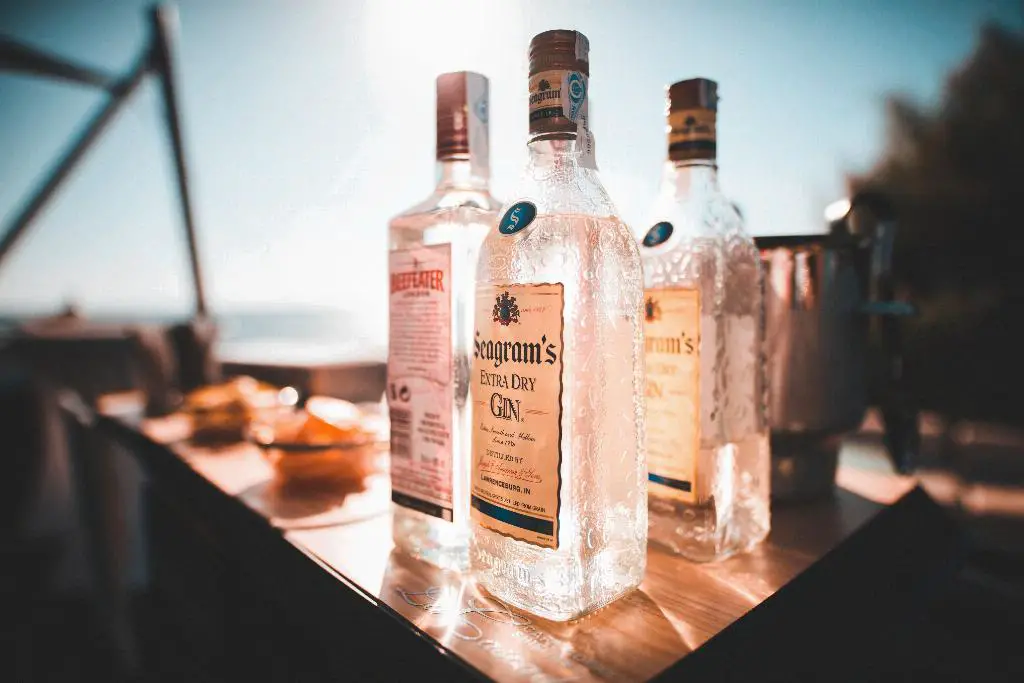When it comes to indulging in a refreshing gin-based drink, the options seem endless. Two popular variations include sloe gin and dry gin. While they share the same base spirit, the differences between these two libations are significant. In this article, we will delve into the distinguishing factors that set sloe gin and dry gin apart.
The Alcohol Content
One of the most notable discrepancies between sloe gin and dry gin lies in their alcohol content. Traditional dry gin, such as the renowned London Dry, typically has an alcohol percentage ranging from 45 to 47%. On the other hand, sloe gin tends to be considerably lower, with an alcohol by volume (ABV) as low as 15%. This reduced alcohol content in sloe gin allows for a smoother and oftentimes sweeter drinking experience.
The Flavor Profile
Flavor is another area where sloe gin and dry gin diverge. Dry gin is characterized by its juniper-forward taste, with a range of botanicals contributing to its complex flavor profile. Sloe gin, however, takes on a distinct fruity essence. This is due to the addition of sloe berries during the production process, which infuse the gin with their tart and slightly sweet flavors. The result is a harmonious blend of botanicals and sloe berries, creating a unique and delightful taste.
The Appearance
Visually, sloe gin stands apart from its dry gin counterpart. While dry gin typically maintains a clear and transparent appearance, sloe gin boasts a beautiful pink hue. This rosy color is a direct result of the sloe berries used in its production. Depending on the producer, sloe gin can range from pale pink all the way to a rich and vibrant ruby shade. This striking visual distinction adds an extra layer of allure to sloe gin, making it a visually appealing option.
The Production Process
The production process is where the true dissimilarity between sloe gin and dry gin comes to light. Dry gin is created through a process called distillation, which involves the maceration or steeping of botanicals in ethanol, followed by further distillation. This method ensures that the gin retains its dry and juniper-forward characteristics.
Sloe gin, on the other hand, undergoes an additional step that sets it apart. After the initial distillation, sloe berries, which are small, dark red fruits, are added to the gin. These berries are left to infuse the liquid for an extended period, allowing their flavors to meld seamlessly with the gin. This infusion process imparts the distinctive fruity notes and appealing color that are characteristic of sloe gin.
Serving Suggestions
Both sloe gin and dry gin lend themselves to various serving possibilities. Dry gin shines in classic cocktails like the Martini or the Negroni, where its botanical flavors take center stage. Sloe gin, on the other hand, excels in fruity and refreshing cocktails. It pairs wonderfully with citrus flavors and is often enjoyed simply with tonic water or lemonade, allowing the berry-infused gin to shine.

Conclusion
While both sloe gin and dry gin share a common base, their differences are palpable. Sloe gin boasts a lower alcohol content, a distinct fruity flavor profile, and a visually stunning pink color. The production process sets them apart, with sloe gin undergoing an additional step of infusing sloe berries to achieve its unique characteristics. Whether you prefer the classic dry gin taste or the fruity allure of sloe gin, both options offer a world of possibilities for the adventurous gin enthusiast.
